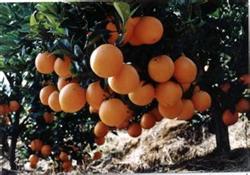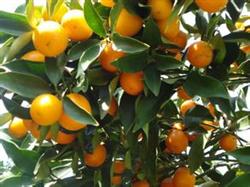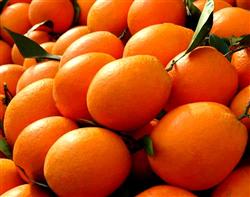High-yield cultivation techniques of navel orange

First, the selection of dwarfing rootstock and grafting of dwarfing varieties are beneficial to early fruit. The large-leaf floret strain of Fructus Aurantii is generally selected as the dwarfing rootstock. Fructus Aurantii is a dwarfing rootstock in citrus at present. It has four strains, among which the dwarfing effect of big leaf and small flower is more ideal. Second, the curved root is shallowly planted to control the depth of the main root. It can control the vigorous growth of the main root, then promote the occurrence of a large number of horizontal roots and absorbing roots, and increase the nutrient area of the root system. Third, short trunk shaping, short shoot coring and controlling crown growth can increase the number of crown branches and make it quickly form early fruiting crown. Generally speaking, navel oranges have the ability to bear fruit only after they have the number of 6 words and 7 branches. After planting navel oranges, dwarf shaping was carried out, with an average dry height of less than 15 cm, of which 20% of the plants had main branches from the base. At the same time, every spring, summer and autumn, when the shoot is 15ml / 20cm long, the dwarf shoot is plucked to promote lateral branches to increase the number of branches. Fourth, improve soil and cut roots, increase soil organic matter, reasonable ratio of nitrogen, phosphorus and potassium, so as to meet the nutritional needs of early fruiting and high yield of navel orange. After 2-3 years of planting, the eastern, western, southern and northern sides of the navel orange plant were dug and expanded to improve the soil. Root cutting can control root growth and promote early fruiting and high yield of navel orange. Fifth, twisting, pulling and encircling branches are conducive to nutrient absorption and accumulation, promote flower bud differentiation, and can bear fruit ahead of time and yield earlier. The navel orange planted with Qugen, while pulling upright branches and opening angles, twisted the long and strong autumn shoots in the first and middle of October, that is, after the autumn shoots were lignified, by holding the base of the autumn shoots with the left hand, twisting the shoots by 180 degrees with the right hand, slightly injuring the xylem, or making the strong autumn shoots circle or flatten each other, which can slow down the vigorous growth of autumn shoots and accumulate nutrients produced by photosynthesis in the upper part of autumn shoots in a short time. It is beneficial to flower bud differentiation, increase flower quantity, improve flower quality and fruit setting rate.
- Prev

Commercial treatment technology of postharvest navel orange fruit
1. Growth and development index of high yield of navel orange 1. Tree shape, plant height and crown width. The 4-5-year-old tree is naturally round-headed, the trunk height of the adult tree is controlled at 40 cm, the tree height is controlled at about 2.5 m, and the crown width for high yield should be kept at about 2.80 m x 2.60 m. 2. Diameter and classification. The stem diameter of Newhall branch should be rough.
- Next

Harvesting and fresh-keeping Technology of navel Orange
It is the harvest season for navel oranges. If the fruit growers only pay attention to the early management of the orchard and ignore the technology of fruit treatment, fresh-keeping and storage after fruit harvest, it will lead to fruit deterioration, decay, high yield and poor harvest. Pay attention to the postharvest navel orange fruit, which is usually colored on 80% of the fruit surface, and the fruit remains unchanged.
Related
- Moge, come on! The staff of the peasant association in the producing area of cantaloupe were frightened when the crowd gathered.
- Causes and Solutions of low Fruit setting rate of Apple
- Symptoms and control measures of passion fruit virus disease
- Fruit growing lesson: how do apple orchards keep high yields?
- Can you build orchards in the mountains? What are the pros and cons?
- How to manage the coloring period of Crisson grape?
- This paper introduces the processing technology of two kinds of fig products.
- How much is a month for retired teachers in rural areas by 2020?
- How can strawberry planting increase sugar content? We should pay attention to management in many aspects.
- What are the cultivation techniques on how to improve the yield of golden fruit?

